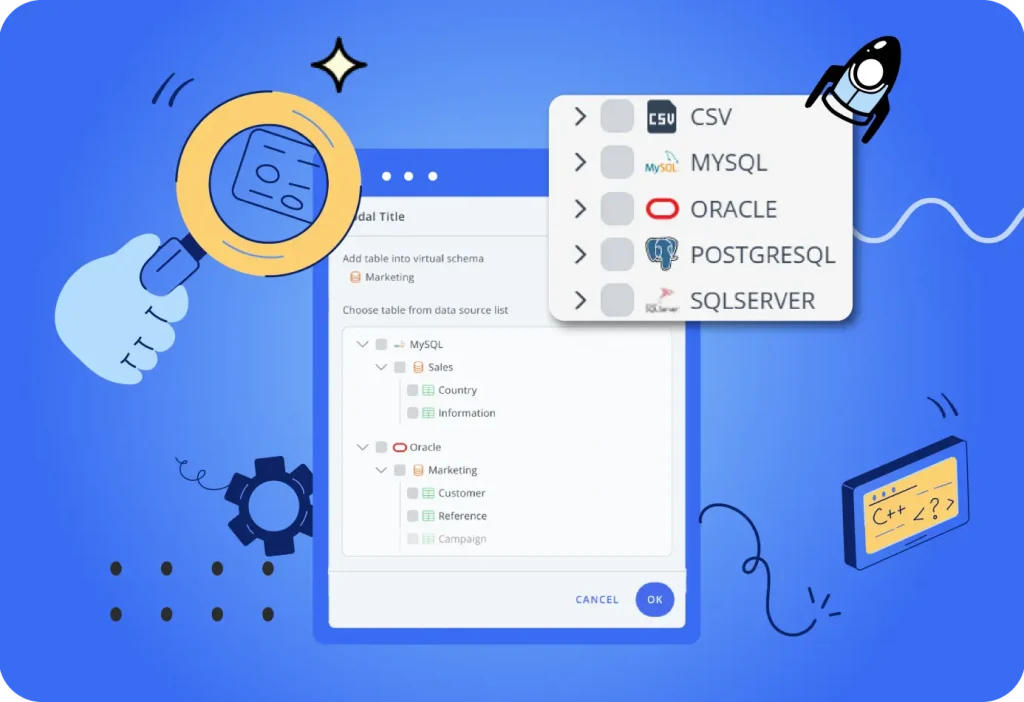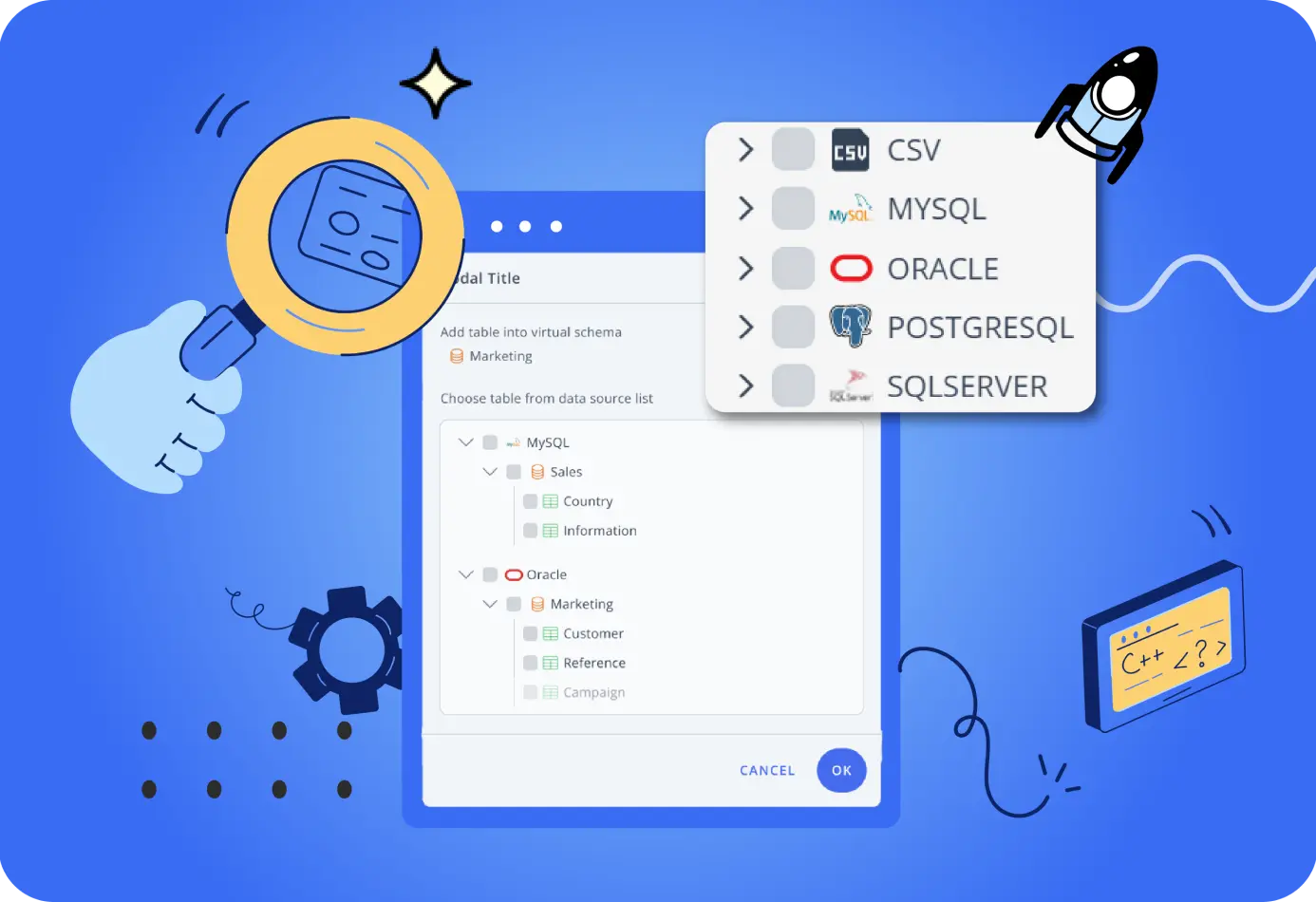After understanding the differences between data virtualization and ETL and their benefits in managing data efficiently, the next question is: how do you get started? This article discusses the practical steps to implement data virtualization in your organization and provides optimization tips to maximize results.

1. Analyze Data Requirements and Existing Architecture
Before starting, analyze business needs and the existing IT architecture. Additionally, consider potential future requirements to ensure scalability. Review:
- Applications and Databases: Identify primary data sources like SalesDB, FinanceDB, InventoryDB, and HRDB. Pay attention to database types (relational, NoSQL, data lakes, etc.) and storage locations (on-premise, cloud, or hybrid).
- Report or Analytics Requirements: Understand the types of reports frequently requested, such as financial reports or operational analysis data. For instance, monthly sales reports or performance dashboards can provide valuable insights.
- Data Scale and Volume: Estimate the expected data size to calculate network capacity and potential computational load.
With this mapping, you can identify critical areas that need early integration.
2. Choose the Right Data Virtualization Platform and Technology
Select a platform that fits your organization’s needs. Consider:
- Data Source Compatibility: Ensure compatibility with your databases, such as Oracle, MySQL, PostgreSQL, or MongoDB. Moreover, check for compatibility with potential future technologies.
- Integration Features: Choose a platform with necessary features like data transformation, caching, and cataloging.
- Scalability: Make sure the platform can be implemented on-premise, in the cloud, or as a hybrid solution.
If using a cloud-based service, make sure you understand the cost structure to avoid unexpected expenses.
Read Also : What is Data Virtualization A Practical Guide
3. Design the Virtualization Model
Once you’ve chosen a platform, build the virtualization model with the following steps. Next, ensure your team understands the model’s structure and purpose.
- Logical Data Model: Define how tables or data collections from each source will be mapped into the virtual model.
- Views or Virtual Layers: Create structured views, such as a “Yearly Financial Report” that consolidates data from various sources. As a result, users can access relevant insights more easily.
- Filtering and Transformation: Apply filters and transformations to ensure only relevant data is retrieved.
This stage allows data analysis without physically moving the data.
4. Conduct Testing and Validation
Before full implementation, conduct a proof of concept (PoC):
- Connection and Security: Check data connections and security settings.
- Performance and Response Time: Identify potential network or computational bottlenecks.
- Data Consistency: Compare results in the virtual layer with the original sources.
This testing helps identify potential issues early on.
5. Optimize Performance and Resource Usage
- Caching: Enable caching for frequently accessed data.
- Indexing: Ensure indexes are applied efficiently.
- Efficient Query Design: Avoid excessive queries like SELECT *.
- Regular Monitoring: Use monitoring tools to track network and computational loads.
6. Integrate with Analytics and BI Tools
Connect the data virtualization layer with your analytics and BI tools, such as Tableau or Power BI. Ensure compatibility with internal applications that need real-time access.
7. Evaluate and Continuously Improve
Perform regular evaluations by monitoring:
- Changes in Data Sources: Ensure new data sources are properly integrated.
- Growth in Data Volume: Adjust configurations if there’s significant data growth.
Conclusion
Data virtualization offers a practical solution for cross-application data integration while optimizing resource use. By consistently applying these steps, your organization can maximize data potential without the need to move or duplicate physical data excessively.
If you would like to learn more about how this technology can benefit your business, contact us for a free consultation.

